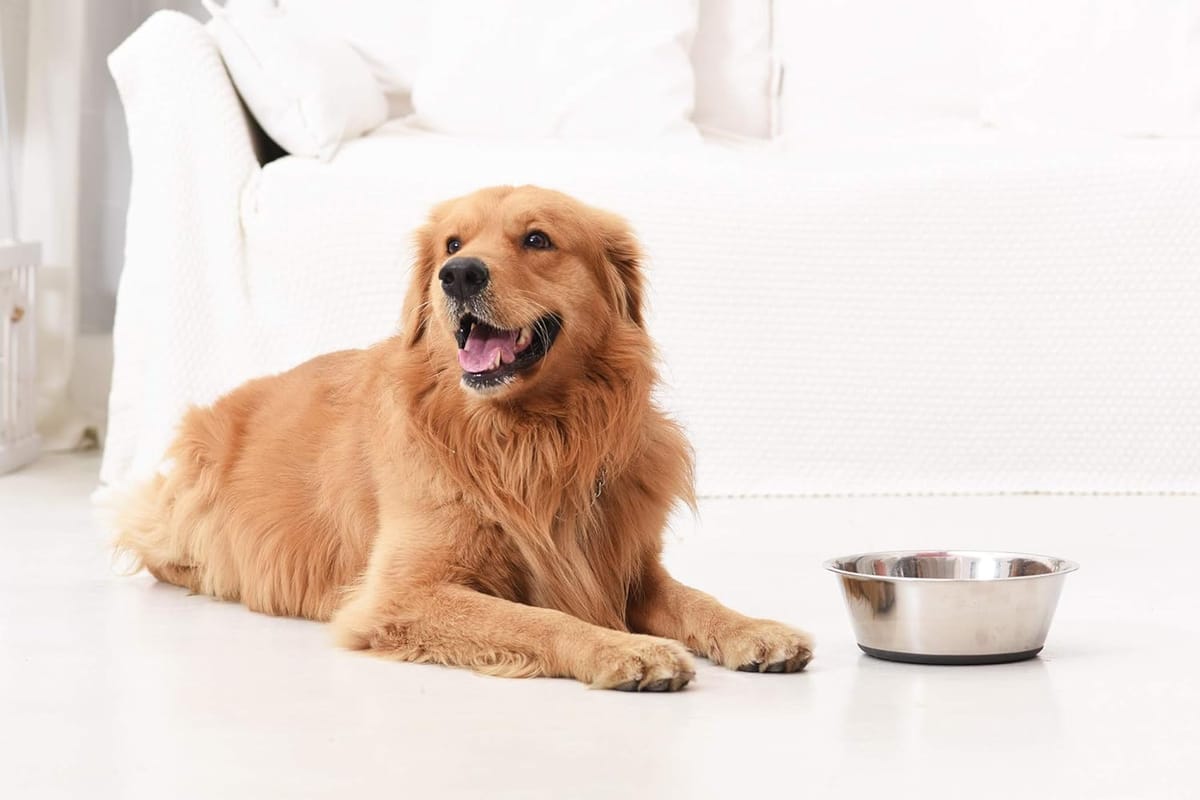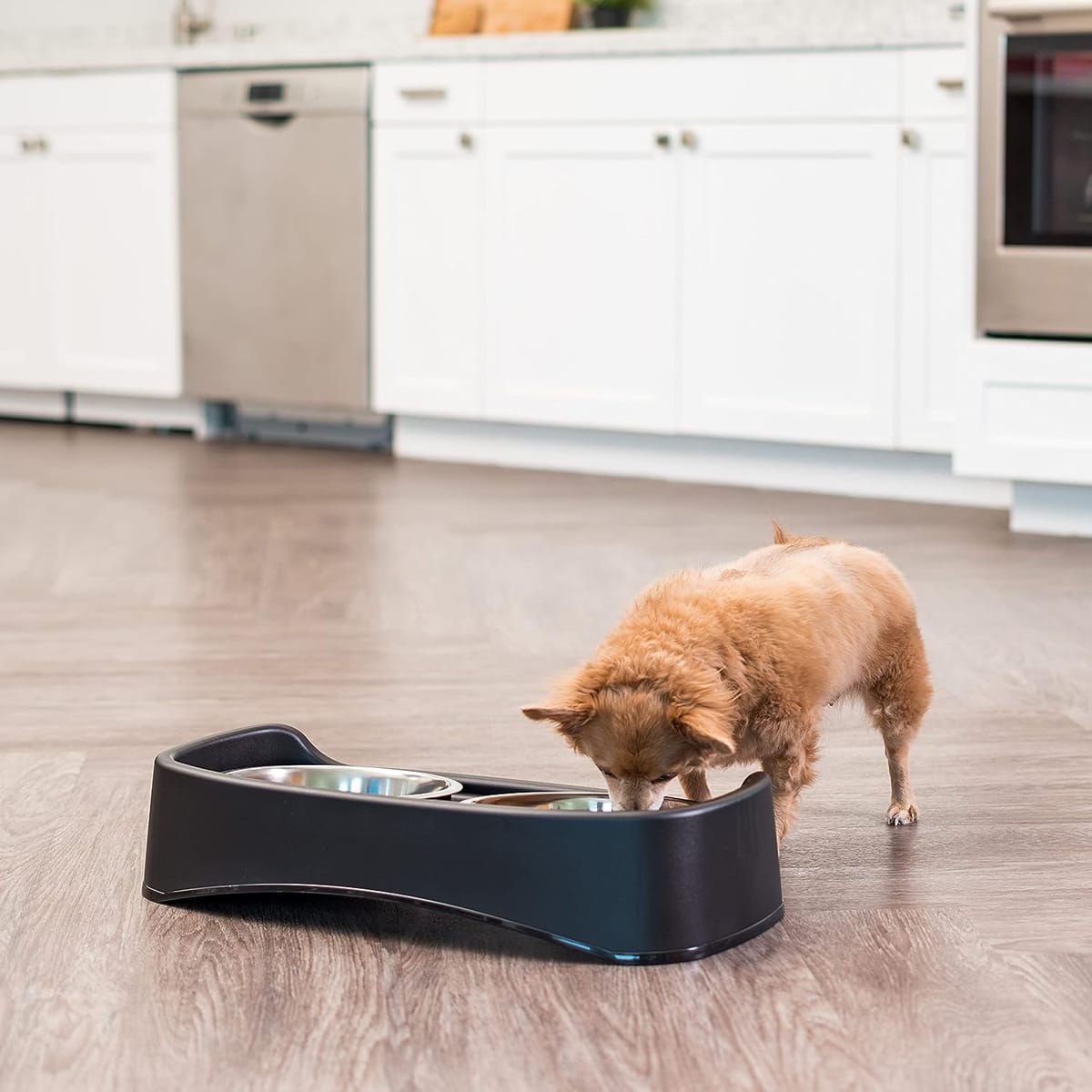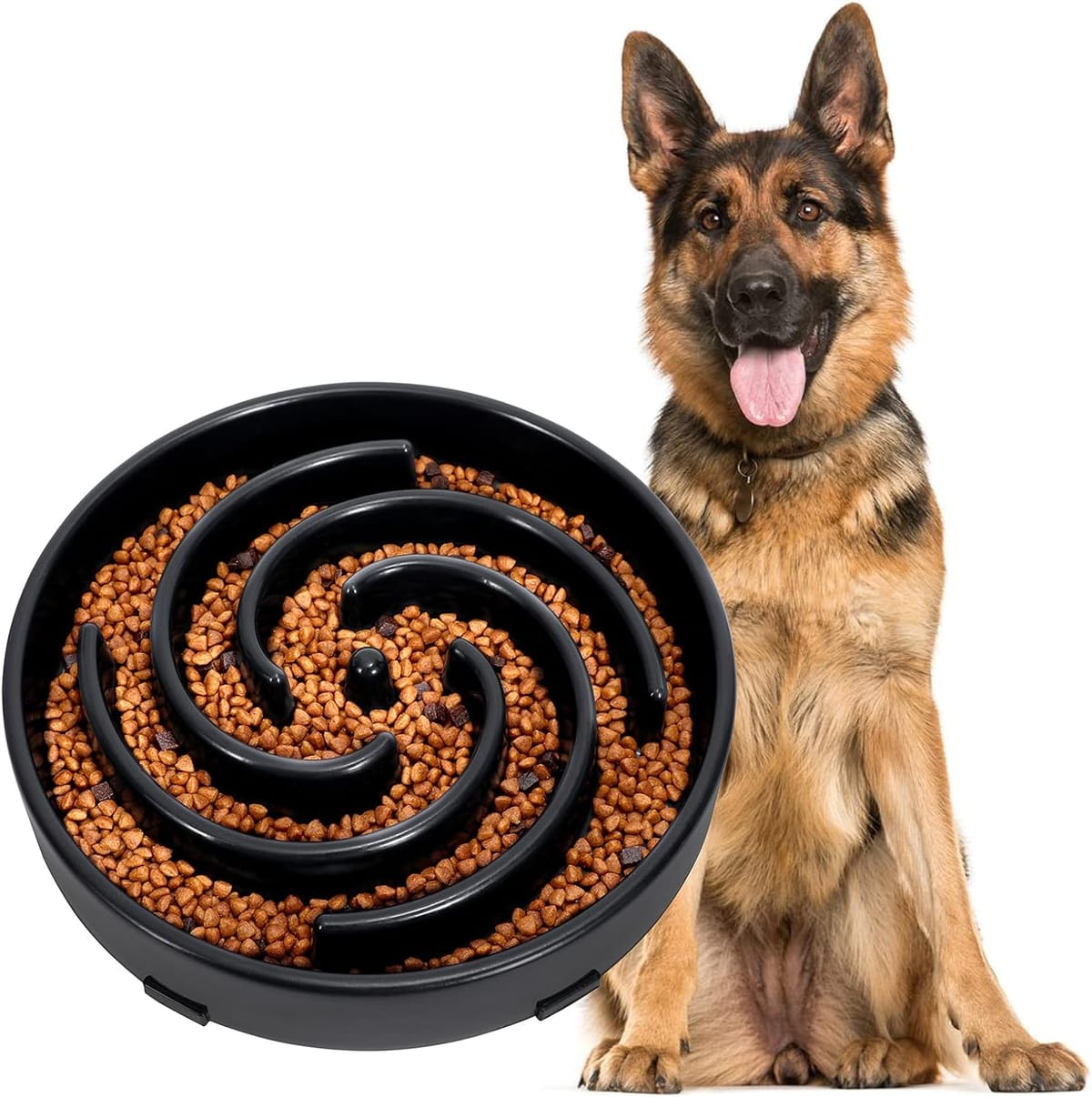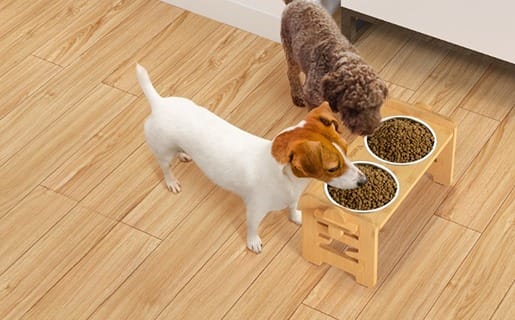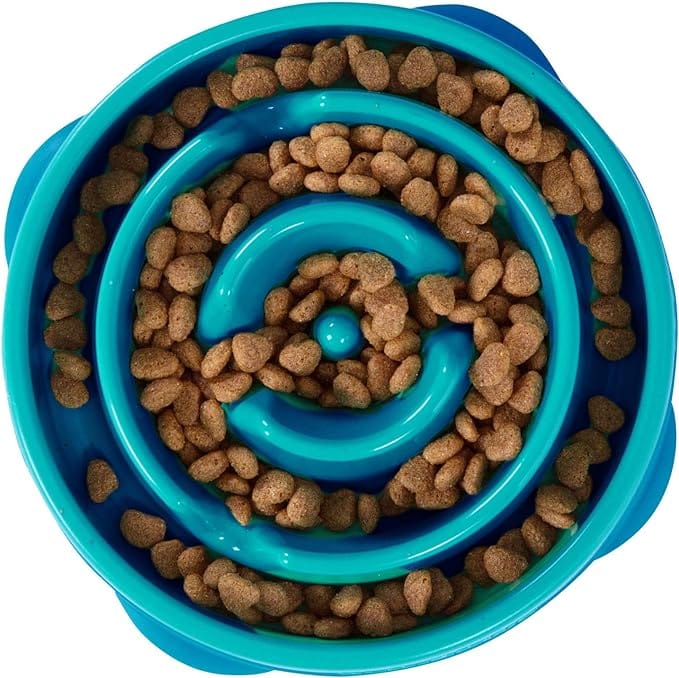Key Takeaways:
- Learn how to create a DIY slow feeder dog bowl to promote healthier eating habits for your dog.
- Discover the benefits of slow feeder dog bowls and how they can prevent health issues like bloating.
- Find out how to use common household items to make an easy DIY slow feeder for your furry friend.
The Importance of Slow Feeding for Dogs
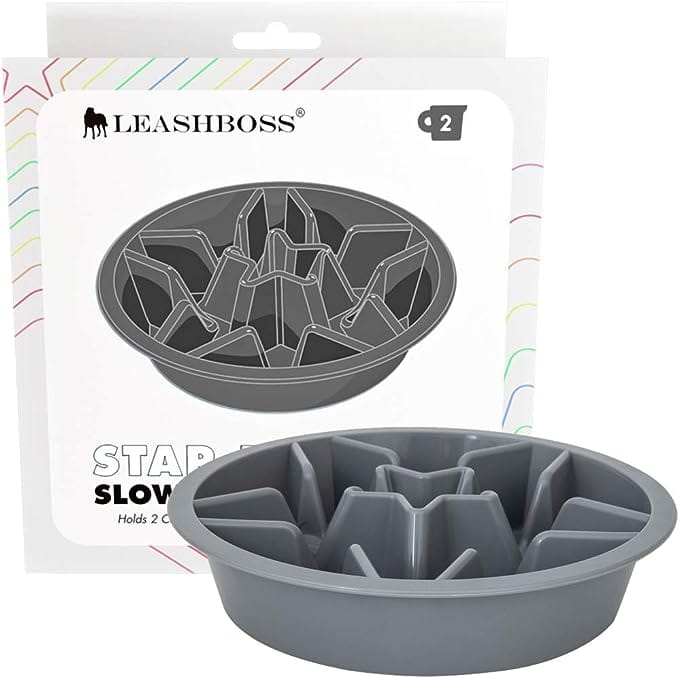
For many dog owners, the sight of their furry friend gobbling down food is a common occurrence. However, when dogs eat too quickly, they can suffer from a variety of health issues, including choking hazards, bloating, and obesity. Slow feeder dog bowls are designed to make dogs work for their food, providing mental stimulation and promoting a healthier eating pace.
How Slow Feeder Bowls Benefit Your Dog
Slow feeder bowls are not just a trend in the pet world; they are recommended by dog trainers and veterinarians alike. By slowing down the eating process, these bowls help prevent the risk of life-threatening conditions such as gastric torsion. They also encourage dogs to chew their food properly, which is essential for good digestion and nutrient absorption.
DIY Slow Feeder Dog Bowl Options
Creating a DIY slow feeder dog bowl is an easy way to enrich your dog's mealtime without breaking the bank. With a few simple items from around the house, you can transform your dog's eating habits for the better. Let's explore some creative and effective options.
Using a Muffin Tin as a Slow Feeder
An old muffin tin can be an excellent tool for a DIY slow feeder. Simply scatter dry dog food into each cup, and watch as your dog uses their paws and snout to knock out small amounts of kibble. This method not only slows down their eating but also provides a fun challenge.
Tennis Balls: A Simple Addition to Slow Down Meals
For an even simpler solution, take your dog's bowl and place a few tennis balls amongst the kibble. Your dog will have to move the balls around to get to the food, effectively slowing down their eating process. This is an easy DIY slow feeder method that requires minimal effort and resources.
Puzzle Feeders: A DIY Challenge
Puzzle feeders are a fantastic way to make dog eat and add mental stimulation to feeding time. You can create a homemade version by hiding dry food in a snuffle mat or arranging it among all the pieces of a toy puzzle. This not only slows down eating but also keeps your dog's brain engaged.
The Role of Portion Control in Slow Feeding
While slow feeder dog bowls are great for pacing your dog's meals, it's also important to consider portion control. Feeding your dog too much food can negate the benefits of a slow feeder. Ensure you're providing the right amount of food for your dog's size and activity level.
Wet Food and Slow Feeders
Slow feeders are typically associated with dry dog food, but what about wet food? You can still encourage your dog to eat slowly by spreading wet food across a flat surface, like a plate, and placing obstacles that your dog must navigate around to lick up the food.
Customizing Your Dog's Slow Feeder Experience
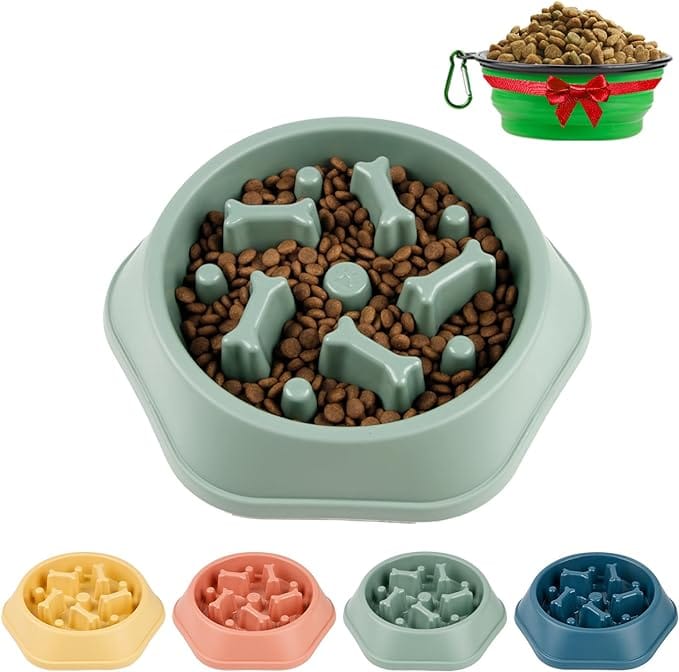
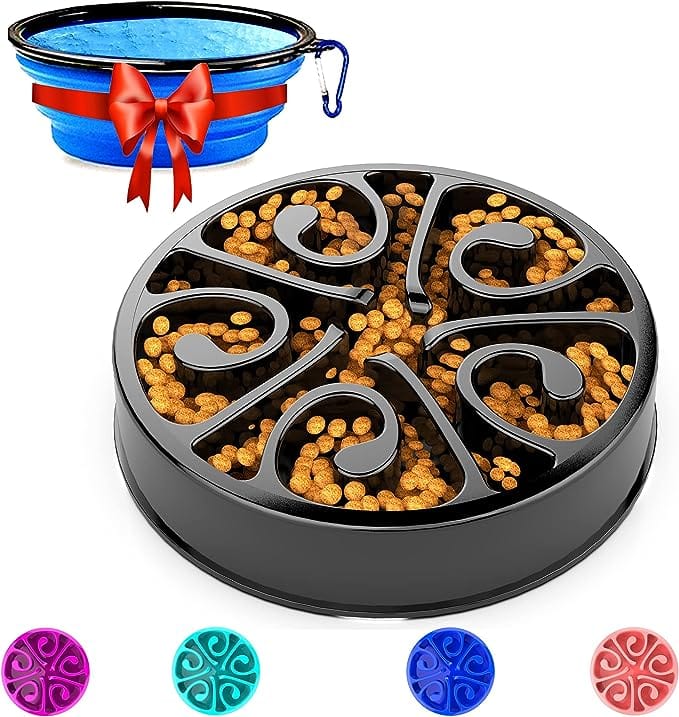
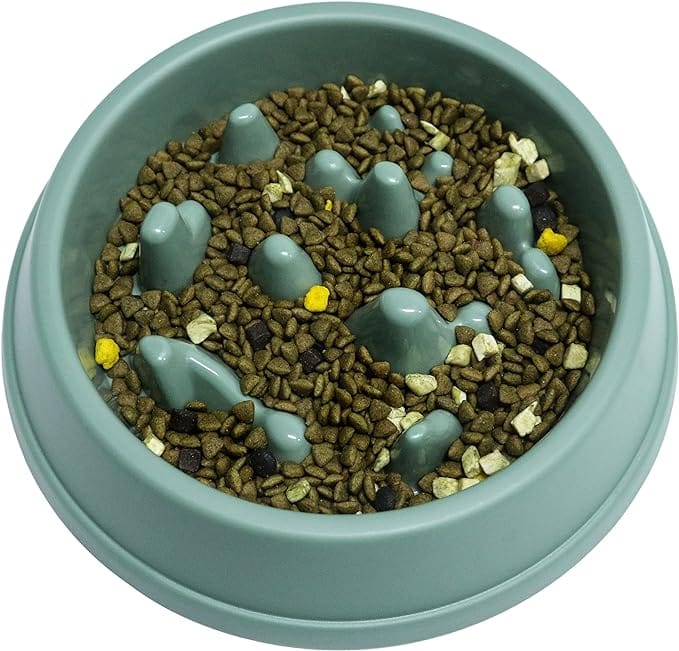
Have you ever watched your pup approach their dog dish with the kind of gusto that makes you worry they might inhale their doggy kibble rather than eat it? It's a common sight for most dogs, but it's not always the healthiest way to dine. Customizing your dog's slow feeder bowl can turn mealtime into a more enriching experience. By adding a tennis ball or two, you can create obstacles that make your dog work a bit harder for their food, slowing down their eating pace and reducing the risk of life-threatening issues like bloat.
But don't stop there! Why not get creative with a muffin tin upside down? Place it under the dog's bowl to create an instant puzzle feeder. This simple hack not only slows down your dog's eating but also stimulates their mind. Remember, the goal is to make your dog's meals a fun, engaging activity that also promotes better digestion. By personalizing their slow feeder, you're ensuring that your pup eats at a healthier pace while also adding an element of play to their daily routine.
The Health Benefits of Slow Feeding
When a dog gulps down their food too quickly, it can lead to a host of health issues, including stomach discomfort and even more severe conditions like gastric torsion. By using a slow feeder bowl, you're encouraging your dog to eat at a more natural, leisurely pace, which can help prevent these problems. Eating slowly allows for better digestion and absorption of nutrients, meaning your pup gets the most out of their two meals a day. Plus, it can help overweight dogs lose weight by making a small amount of food last longer, which can reduce the constant feeling of hunger.
Moreover, slow feeding isn't just about physical health; it's also about mental well-being. Dogs are natural foragers, and making them work for their food satisfies this instinctual drive. A puzzle feeder or a new dog bowl designed to slow down their eating can turn a quick chow-down into an engaging activity that challenges their mind. This mental stimulation can reduce boredom and anxiety, leading to a happier, more contented dog. So, by investing a little time into your dog eating and creating a slow feeder, you're not only taking care of their stomach but also nurturing their spirit.
The Safety of DIY Slow Feeders
When creating a DIY slow feeder dog bowl, safety should be your top priority. Ensure that all the pieces you use are non-toxic and too large to be a choking hazard. Regularly inspect your DIY slow feeder bowl for any damage that could harm your dog.
Cleaning and Maintenance of Your DIY Feeder
Hygiene is crucial when it comes to your dog's dish. Your DIY slow feeder should be easy to clean to prevent the buildup of bacteria. Choose materials that are dishwasher safe or can be easily washed by hand to keep your dog's feeding area sanitary.
Introducing Your Dog to a Slow Feeder
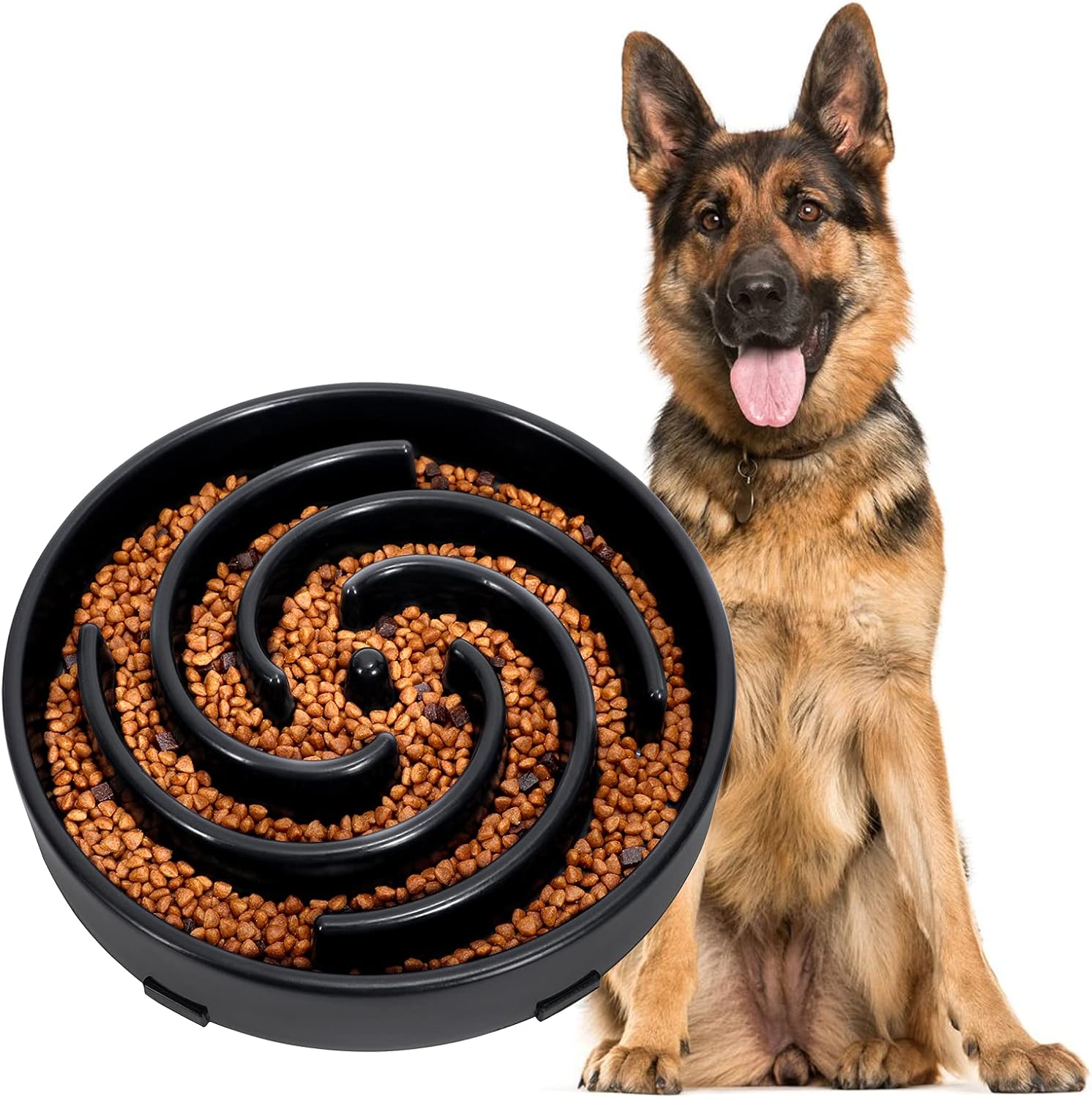
Some dogs may be hesitant to try new things, but with patience, you can teach an old dog new tricks. Start by using the slow feeder for small portions of their favorite treats, gradually increasing to full meals as they become more comfortable with the new feeding method.
Monitoring Your Dog's Progress
As you introduce the slow feeder, keep an eye on your dog's eating habits. Some dogs may try to outsmart the feeder or become frustrated. If this happens, take a step back and make the challenge easier, then slowly work your way up to more complex feeders.
The Fun Factor: Making Mealtime Exciting
A DIY slow feeder dog bowl isn't just about health; it's also about fun. By turning mealtime into a game, you're providing your dog with entertainment and a sense of accomplishment once they've figured out how to get to their food.
Cost-Effective and Customizable
One of the best parts about a DIY slow feeder is that it's highly customizable and cost-effective. You can tailor the difficulty level to your dog's needs and preferences, and you don't have to spend a fortune at pet stores for a commercial product.
The Impact on Your Dog's Overall Health
By encouraging your dog to eat slowly, you're contributing to their overall health and well-being. Slow feeders can help maintain a healthy weight, reduce the risk of choking, and improve digestion, leading to a happier and healthier life for your canine companion.
Engaging with Your Dog During Meals
Using a DIY slow feeder is also a great opportunity to bond with your puppy. You can encourage and praise them as they navigate the feeder, turning mealtime into a shared, positive experience.
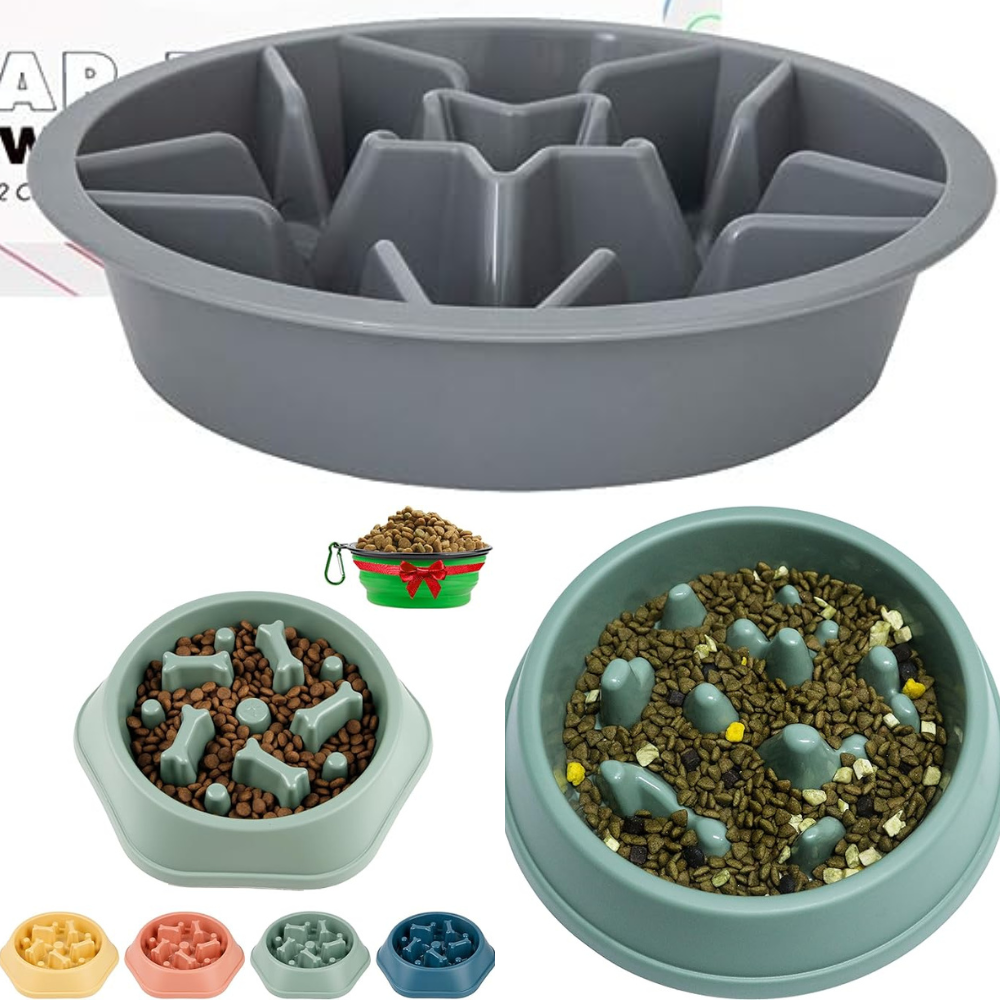

Can I use a DIY slow feeder for both dry and wet food?
Yes, you can use a DIY slow feeder for both dry and wet food. For wet food, spread it across a flat surface and add obstacles for your dog to navigate around.
How do I clean my DIY slow feeder dog bowl?
Choose materials that are easy to clean, such as dishwasher-safe items or those that can be washed by hand. Regularly clean the feeder to prevent bacteria buildup.
What if my dog becomes frustrated with the slow feeder?
If your dog shows signs of frustration, simplify the feeder and gradually increase the difficulty as they become more accustomed to it. Always monitor their progress and adjust as needed.

DIY slow feeder dog bowls are an effective and enjoyable way to improve your dog's eating habits. By using simple household items like muffin tins and tennis balls, you can create a feeding experience that is both mentally stimulating and beneficial for your dog's health. Remember to prioritize safety, cleanliness, and the right portion sizes to ensure the best results. With a little creativity and patience, you can make mealtime a rewarding activity for your furry friend.
